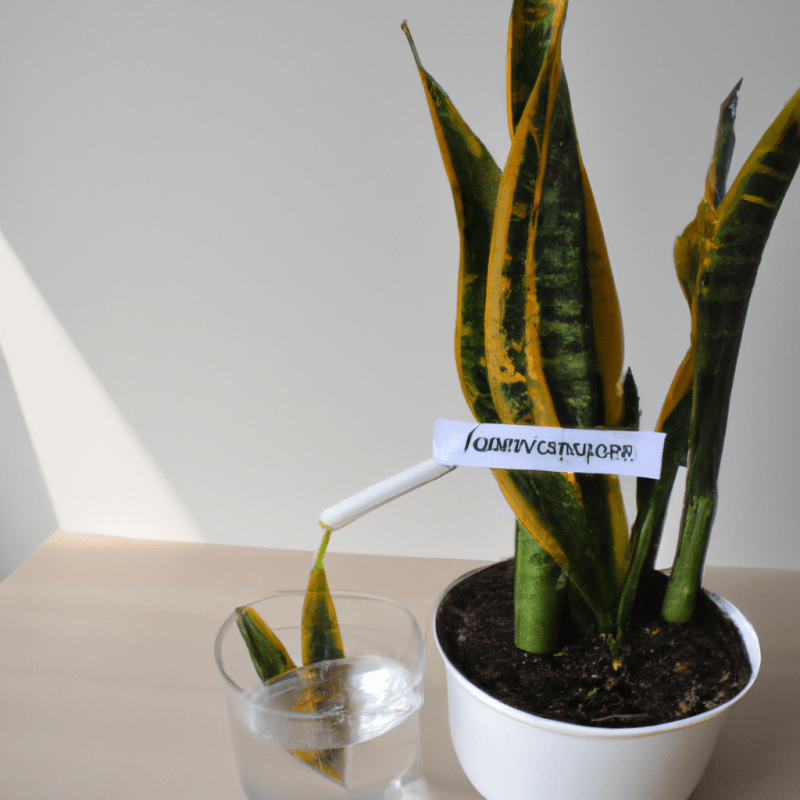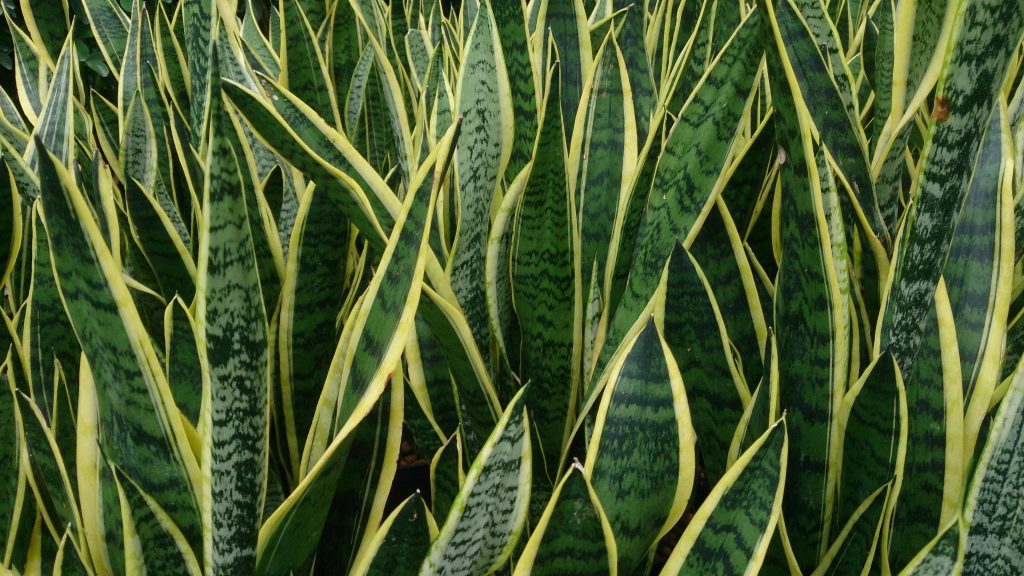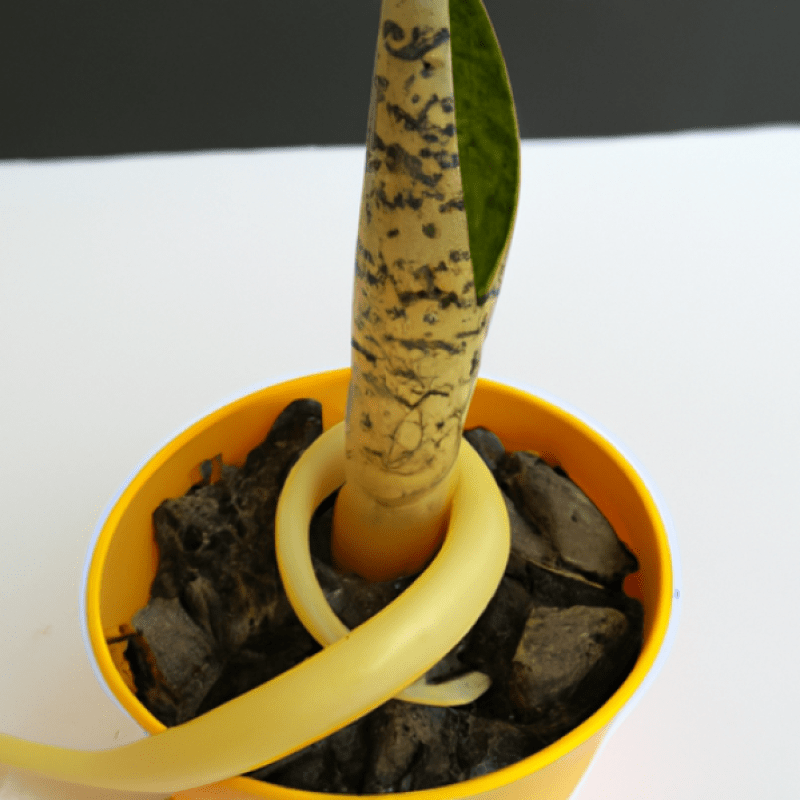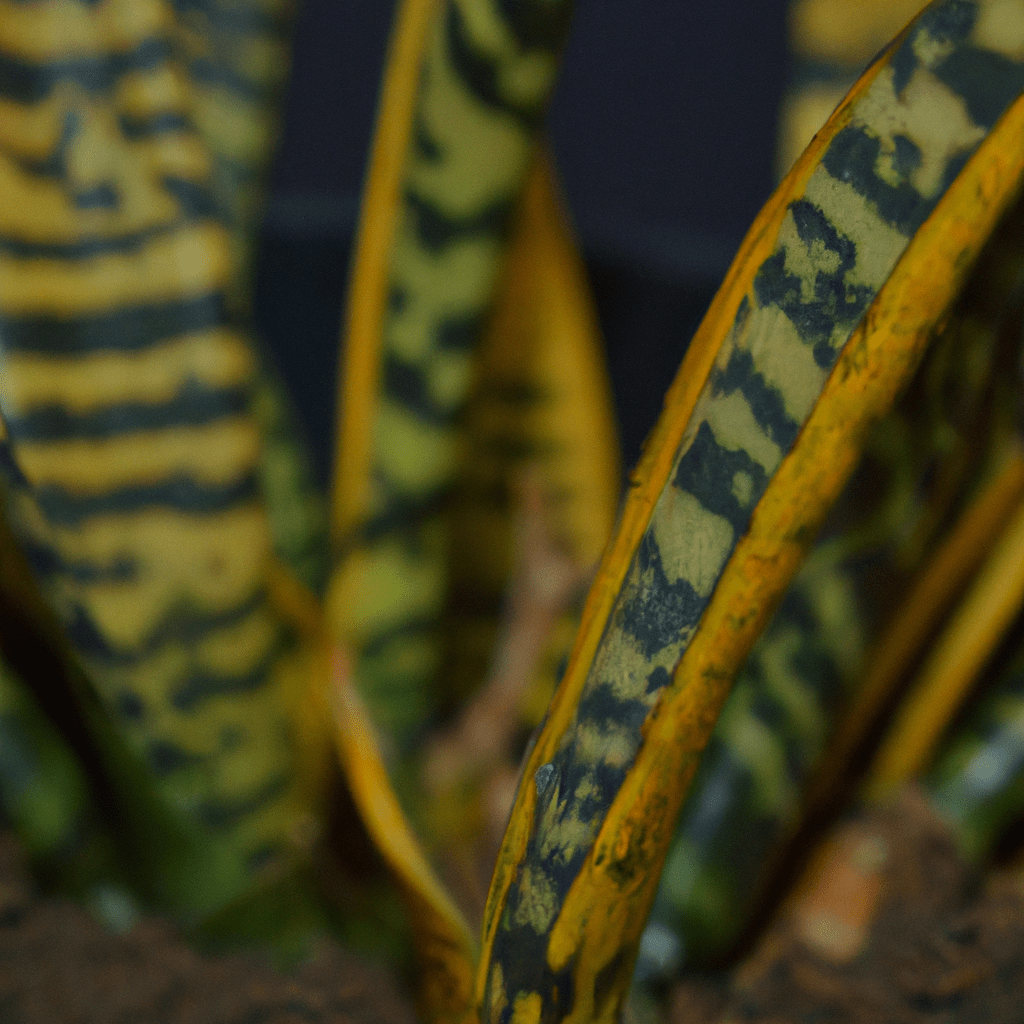Are you a proud plant parent who’s just added a quirky addition to your green squad? Brace yourself, because we’re about to dive into the world of Sansevieria Cylindrica, the cylindrical snake plant. These succulent superstars are well-known for their robustness and unconventional shape, making them a favorite among plant enthusiasts everywhere. But, hold up! Before you embark on this wild and wonderful journey of caring for your Sansevieria Cylindrica, we’ve prepared a list of 20 crucial questions you should be well-versed in. So grab your watering can and join us as we unravel the secrets of this spiky, yet sophisticated, member of the plant kingdom!
1. What are the specific care requirements for Sansevieria cylindrica?
Sansevieria Cylindrica is a captivating succulent that demands certain care requirements to thrive. Here are the specifics:
- Light: This plant prefers bright indirect light but can tolerate lower light conditions.
- Temperature: It thrives in temperatures between 60-85°F (15-29°C) and can tolerate mild fluctuations.
- Watering: Allow the soil to dry partially between waterings. Overwatering can lead to root rot.
- Soil: Well-draining soil is crucial to prevent excess moisture retention.
- Humidity: It can tolerate average household humidity levels but prefers drier conditions.
- Fertilizer: Feed every 2-3 months during the growing season with a balanced houseplant fertilizer.
- Propagation: Propagate through leaf cuttings or by dividing the plant at the roots.
- Pests: Occasionally susceptible to mealybugs and spider mites, so monitor regularly.
By following these care requirements, you can ensure the health and vibrancy of your Sansevieria Cylindrica.
2. How often should I water my Sansevieria Cylindrica plant?
Sansevieria Cylindrica demands a watering regimen that is intricately balanced, yet enigmatic in its nature. The frequency at which this plant should be watered is contingent upon several factors, enveloped in an enigmatic dance between light, temperature, and humidity conditions. In the realm of irrigation, a sporadic approach is recommended, allowing the soil to adequately dry out between watering sessions. The lush green foliage of this enigmatic plant should not be subjected to excessive moisture, for it thrives in a perpetually perplexing state of moderate drought. Endeavor to exude restraint in watering, embracing the art of unpredictability and irregularity.
3. What kind of light does Sansevieria Cylindrica prefer?
Sansevieria Cylindrica exhibits a preference for bright, indirect light conditions. It thrives in partially shaded areas with filtered sunlight, although it can tolerate low light conditions. However, it is important to avoid exposing the plant to direct sunlight as it can lead to leaf burn. For optimal growth, it is recommended to place the Sansevieria Cylindrica near a north or east-facing window where it can receive gentle morning or evening sunlight. Additionally, rotating the plant periodically ensures even light distribution and promotes uniform growth.
4. Can Sansevieria Cylindrica tolerate low light conditions?
Yes, Sansevieria Cylindrica is capable of tolerating low light conditions. This remarkable succulent species possesses certain adaptations that allow it to thrive in environments with limited light availability. The key attributes contributing to its tolerance include:
- Structural Adaptations: Sansevieria Cylindrica has long, cylindrical leaves that enable maximum surface area for light absorption. These leaves are capable of capturing and utilizing low light more efficiently.
- Storage of Nutrients: This plant is proficient in storing nutrients within its rhizomes and leaves. This nutrient reservoir aids in supporting its growth and survival during periods of reduced light.
- Efficient Photosynthetic Machinery: Sansevieria Cylindrica possesses a highly efficient photosynthetic system. It is equipped with unique adaptations, such as Crassulacean Acid Metabolism (CAM), which allows it to minimize water loss and optimize carbon dioxide uptake in low light conditions.
- Adaptive Growth Patterns: The plant exhibits flexibility in adapting its growth patterns to better suit low light conditions. It can elongate its leaves towards available light sources, facilitating efficient light capture.
Despite its ability to tolerate low light, it is important to note that Sansevieria Cylindrica still requires some indirect or filtered light for optimum growth and should be placed near a window if possible. Regular monitoring and adjusting of lighting conditions will ensure the health and vitality of this fascinating plant.
5. How do I propagate Sansevieria Cylindrica?
To propagate Sansevieria Cylindrica, it is advisable to follow these perplexing steps:
- Start the process by selecting a mature and healthy leaf from the plant.
- Carefully cut the leaf into sections, ensuring that each section is at least 2-3 inches long.
- Dip the cut end of each section in a rooting hormone, aiming to create an environment conducive to root development.
- Prepare a well-draining potting mix by combining perlite, sand, and peat moss in equal parts.
- Plant the cut sections vertically in the potting mix, burying them about an inch deep.
- Place the potted sections in a brightly lit area with indirect sunlight.
- Keep the soil slightly moist but not overly wet, as excessive moisture may lead to rot.
- Within a few weeks, the cut sections should start developing roots.
- Once the roots have been established, which could take several months, transfer each section to its individual pot.
- Continue to care for the new plants by providing adequate light, regular watering, and occasional fertilization.
Remember, propagating Sansevieria Cylindrica can be a bursty and perplexing process, but with patience and proper care, you can successfully grow new plants from cut leaf sections.
6. Is it necessary to fertilize Sansevieria Cylindrica?
Sansevieria Cylindrica is a hardy plant that can tolerate neglect and low nutrient conditions. While it can survive without regular fertilization, providing it with occasional fertilization can promote healthier growth and enhance its overall appearance. Fertilizing this plant can be beneficial in maintaining its vibrant green color, stimulating new growth, and increasing its resistance to pests and diseases. Organic fertilizers rich in nitrogen, phosphorus, and potassium, or a balanced houseplant fertilizer, can be applied every few months during the growing season. However, it is important to avoid over-fertilization as it can lead to root burn and other detrimental effects.
7. How frequently should I repot my Sansevieria Cylindrica plant?
Repotting of Sansevieria Cylindrica should be done regularly to ensure optimal growth and health. This peculiar plant, known for its cylindrical leaves, demands invigorating attention. Engaging in the repotting process, you must embrace the rhythm of the roots, tending to their desires and yearnings. Be vigilant in assessing the pot’s capacity to contain the roots, oh explorer of green realms! When the roots become entangled and congested, whispering tales of restraint, it is time to embark on the sacred journey of repotting. Loosen their earthly bounds, granting them freedom to explore new horizons. As a guide, consider repotting every 2-3 years, acknowledging the ebb and flow of your plant’s growth as it dances with the rhythms of nature’s eternal symphony. Remember, though, this is but a mere suggestion, and the enigmatic dance of repotting remains an artful mystery to be unraveled by the daring horticulturalist.
8. What is the ideal temperature range for Sansevieria Cylindrica?
The ideal temperature range for Sansevieria Cylindrica is quite perplexing indeed. Bursting with complexity and variability, this intriguing plant thrives in a temperature range that can leave one utterly bewildered. Brace yourself for the enigmatic truth: the ideal temperature range for Sansevieria Cylindrica is typically between 60 to 85 degrees Fahrenheit (15 to 29 degrees Celsius). Within this enigmatic range, this captivating plant will display its full burst of vitality and vigor. Nevertheless, it is important to note that Sansevieria Cylindrica can tolerate temperatures outside this range, but be prepared to confront the perplexity and unpredictability that may ensue.
9. Can Sansevieria Cylindrica survive in outdoor conditions?
Yes, Sansevieria Cylindrica can survive in outdoor conditions. This highly adaptable plant thrives in a variety of environments, displaying remarkable resilience. It can withstand both extreme heat and cold, making it suitable for outdoor cultivation in diverse climates. Additionally, its succulent nature allows it to tolerate periods of drought, making it an ideal choice for outdoor landscaping. However, it is crucial to note that proper care and maintenance are necessary to ensure its survival and optimal growth in outdoor settings. Regular watering, well-draining soil, and protection from frost will contribute to the plant’s overall health and longevity.
10. Are there any common pests that affect Sansevieria Cylindrica?
Yes, there are several common pests that can infest Sansevieria Cylindrica, causing significant damage to the plant if left untreated. These include:
1. Spider mites: These tiny arachnids suck sap from the leaves, causing yellowing, stippling, and webbing.
2. Mealybugs: These small insects feed on the sap and leave behind a white, waxy residue on the leaves, stems, and soil.
3. Scale insects: These pests attach themselves to the plant and secrete a protective shell-like covering. They feed on sap and can cause leaf yellowing and wilting.
4. Aphids: These small, soft-bodied insects suck sap from the plant and reproduce rapidly. They can cause distorted growth, yellowing, and the formation of sticky residue (honeydew).
5. Fungus gnats: These small flies lay their eggs in damp soil, which hatch into larvae that feed on the roots of the plant, leading to root damage and poor growth.
It is important to regularly inspect Sansevieria Cylindrica for signs of these pests and take appropriate measures like using insecticidal soap, neem oil, or introducing natural predators to control the infestation.
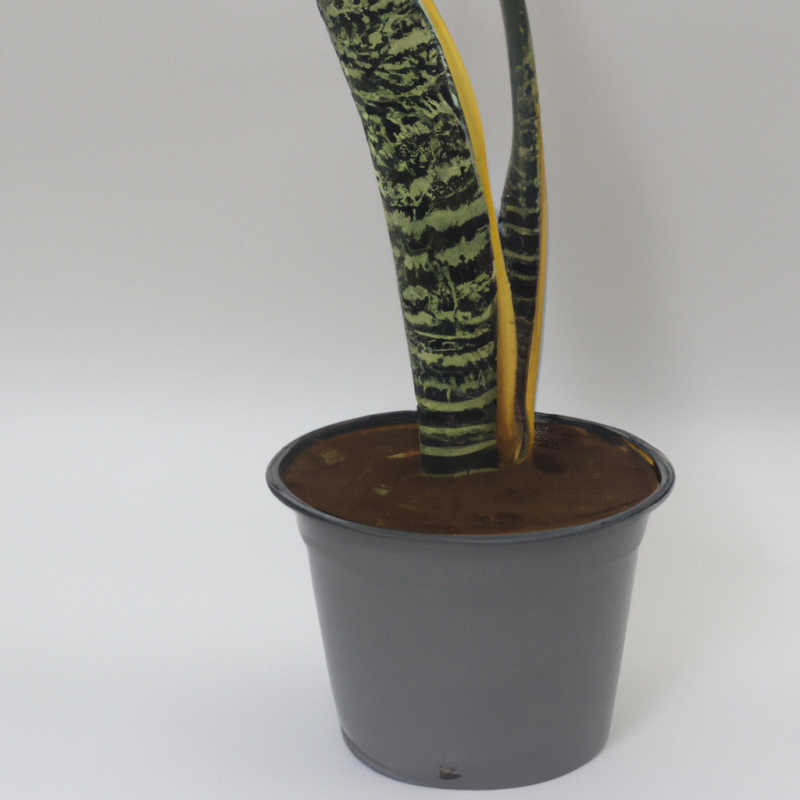
11. What is the best potting mix for Sansevieria Cylindrica?
12. How tall can Sansevieria Cylindrica grow?
Sansevieria Cylindrica exhibits a fascinating growth pattern. Its height can vary significantly, ranging from a few inches to several feet. It grows in a clumping manner, with multiple cylindrical leaf rosettes emerging from a basal rhizome. These rosettes can reach impressive heights, with some specimens reaching up to 6 feet tall. However, it is important to note that the growth of Sansevieria Cylindrica largely depends on various environmental factors such as light intensity, temperature, and available nutrients. Proper care and favorable conditions can contribute to the plant’s optimal growth potential.
13. Should I trim the leaves of my Sansevieria Cylindrica plant?
Yes, trimming the leaves of your Sansevieria Cylindrica plant can be advantageous. First, it promotes air circulation around the plant, reducing the risk of fungal infections. Additionally, trimming can help maintain the plant’s aesthetic appeal by removing any damaged or discolored leaves. However, it is crucial to exercise caution while trimming, as excessive removal of leaves can hinder the plant’s ability to photosynthesize and grow. It is recommended to use clean, sharp tools and trim only the necessary leaves, ensuring a balanced and healthy appearance for your Sansevieria Cylindrica plant.
14. How long does it take for Sansevieria Cylindrica to flower?
The flowering cycle of Sansevieria Cylindrica is a subject of intricacy, as it is contingent upon various factors and the plant’s inherent idiosyncrasies. The duration from inception to flowering may be remarkably erratic and relies on diverse circumstances, such as environmental conditions, nurturing practices, and genetic predispositions. This enigmatic species has been known to exhibit a flowering span spanning anywhere from several months to several years. It is essential to note that the flowering process can be enigmatic and capricious, demanding patience and attentiveness from even the most ardent botanists. To ascertain the precise duration for the Sansevieria Cylindrica to flower, one must carefully observe and meticulously tend to this enigmatic botanical marvel.
15. Can I keep Sansevieria Cylindrica in a bathroom with low light?
Yes, sansevieria Cylindrica can survive in a bathroom with low light conditions. This plant possesses a remarkable adaptability to various light levels and is known for its ability to thrive in both bright and dim environments. While it prefers bright indirect light, it can tolerate lower light conditions, making it suitable for a bathroom with limited natural light. However, it is important to note that the growth rate may slow down and the plant may become less vibrant in such conditions. To ensure the well-being of sansevieria Cylindrica in low light, consider these care tips:
– Place the plant near a window or any other light source in the bathroom to provide it with as much light as possible.
– Rotate the plant periodically to ensure even exposure to light.
– Avoid overwatering, as the low light conditions may slow down the plant’s metabolism and reduce its water requirements.
– Monitor the plant closely for any signs of stress or inadequate growth, and adjust its care accordingly.
Remember, while Sansevieria Cylindrica can tolerate low light, it will still benefit from brighter conditions whenever possible.
16. How do I prevent overwatering my Sansevieria Cylindrica?
To prevent overwatering your Sansevieria Cylindrica, follow these guidelines:
- Well-drained soil: Use a well-draining soil mixture that allows excess water to flow out easily.
- Infrequent watering: Allow the soil to dry out completely between waterings. Stick your finger about an inch deep into the soil – if it feels dry, it’s time to water.
- Watering technique: When watering, ensure that you water the soil directly at the base of the plant, avoiding the leaves. This helps prevent water from sitting in the crown of the plant.
- Temperature and humidity: Sansevieria Cylindrica prefers warm and dry conditions. Avoid overwatering in cooler months or high-humidity environments.
- Pot selection: Choose a pot with drainage holes at the bottom to allow excess water to escape. Empty the drainage tray after watering to prevent water accumulation.
- Observation: Keep an eye on your plant’s overall health and growth. If you notice signs of overwatering like yellowing leaves or root rot, adjust your watering routine accordingly.
Remember, it is better to underwater than to overwater your sansevieria Cylindrica. With proper care and attention, your plant will thrive and maintain its unique cylindrical shape.

17. Can Sansevieria Cylindrica survive in a dry environment?
Yes, Sansevieria Cylindrica can thrive in a dry environment. This plant possesses remarkable adaptability to arid conditions and has evolved various mechanisms to withstand and conserve water. Its succulent leaves store moisture, enabling it to endure periods of drought. Additionally, the plant has evolved specialized pores called stomata on its leaves, which open during the cooler nighttime hours, allowing for gas exchange while minimizing water loss. Furthermore, the unique cylindrical shape of its leaves reduces the surface area exposed to the environment, minimizing water evaporation. These adaptations collectively enable Sansevieria cylindrica to survive and flourish in dry environments.
18. What are the signs of underwatering in Sansevieria Cylindrica?
The signs of underwatering in Sansevieria Cylindrica may include withered, yellowing, or drooping leaves. The leaves may also become dry and brittle, losing their turgidity. The plant may show signs of stunted growth or reduced foliage production. Additionally, the root system may appear shriveled or discolored. It is essential to closely monitor the moisture levels in the soil and adjust watering practices accordingly to prevent further damage.
19. How do I protect my Sansevieria Cylindrica from root rot?
Sansevieria Cylindrica is an intriguing specimen with its unique cylindrical leaves. To safeguard your cherished plant from the peril of root rot, heed these crucial tips:
- Potting medium: Ensure the soil mixture has excellent drainage properties. A well-draining blend usually comprises components like perlite, coarse sand, and peat moss.
- Pot selection: Opt for a container with drainage holes to prevent water accumulation at the bottom.
- Watering regimen: Allow the soil to dry out partially between waterings. Overwatering is a grave nemesis for your sansevieria, so exercise restraint.
- Avoid standing water: Don’t let your plant sit in a saucer filled with water, as it can lead to excessive moisture in the roots.
- Right watering technique: Water the plant directly into the soil, avoiding the leaves and center rosette. This helps prevent water from seeping into the center, which can cause rot.
- Ideal location: Place your sansevieria in a spot with bright, indirect light. Avoid exposing it to prolonged periods of direct sunlight.
By following these guidelines, you can enhance the chances of preserving your plant’s well-being and shield it from the perils of root rot.
20. Are there any specific diseases that affect Sansevieria Cylindrica?
Sansevieria Cylindrica is generally a hardy plant with few disease issues. However, like any other plant, it can be susceptible to certain diseases. While not common, some specific diseases that can affect Sansevieria Cylindrica include:
- Root rot: Overwatering or poorly drained soil can lead to root rot, causing the roots to become mushy and eventually die.
- Fungal leaf spot: Excessive moisture on the leaves can create favorable conditions for fungal infections, resulting in dark or brown spots on the leaves.
- Mealybugs: These small, white, cotton-like pests can infest the leaves and stems of Sansevieria Cylindrica, sucking out sap and causing damage.
It is important to maintain proper watering practices, ensure well-draining soil, and regularly inspect the plant for signs of pests or diseases.
And there you have it, folks! You are now officially equipped with all the knowledge you need to become a Sansevieria Cylindrica whisperer. These funky, spiky beauties are not only a trendy addition to any space, but they also come with a breeze of low-maintenance care. So, no need to panic if you’ve got a black thumb!
Remember, these plants are all about the “less is more” philosophy. Keep that watering can away, resist the urge to pamper them, and let them embrace their independent spirit. Just a splash of water every few weeks, a cozy spot with moderate light, and voila! You’ve got yourself a happy Sansevieria Cylindrica.
But hey, we get it, you might still have some lingering questions. Does Sansevieria like to rock out to Led Zeppelin or prefer classical music? Can they be trained to do backflips? Well, maybe not, but we hope we’ve answered the 20 most burning questions you had. And if not, don’t hesitate to dig deeper and explore the wonderful world of Sansevieria Cylindrica.
So, go forth and care for these quirky, cylindrical wonders. Show them some love, but not too much love, and watch them thrive in all their spiky glory. And remember, if all else fails, just give them a little pep talk. Who knows, they might just surprise you! Happy Sansevieria Cylindrica-ing, my friends!
